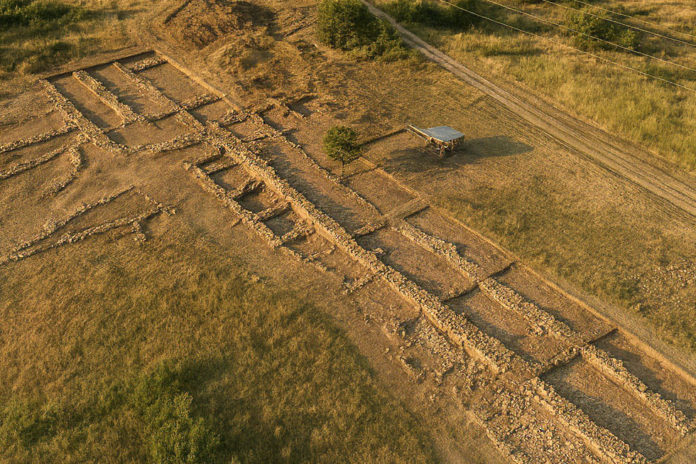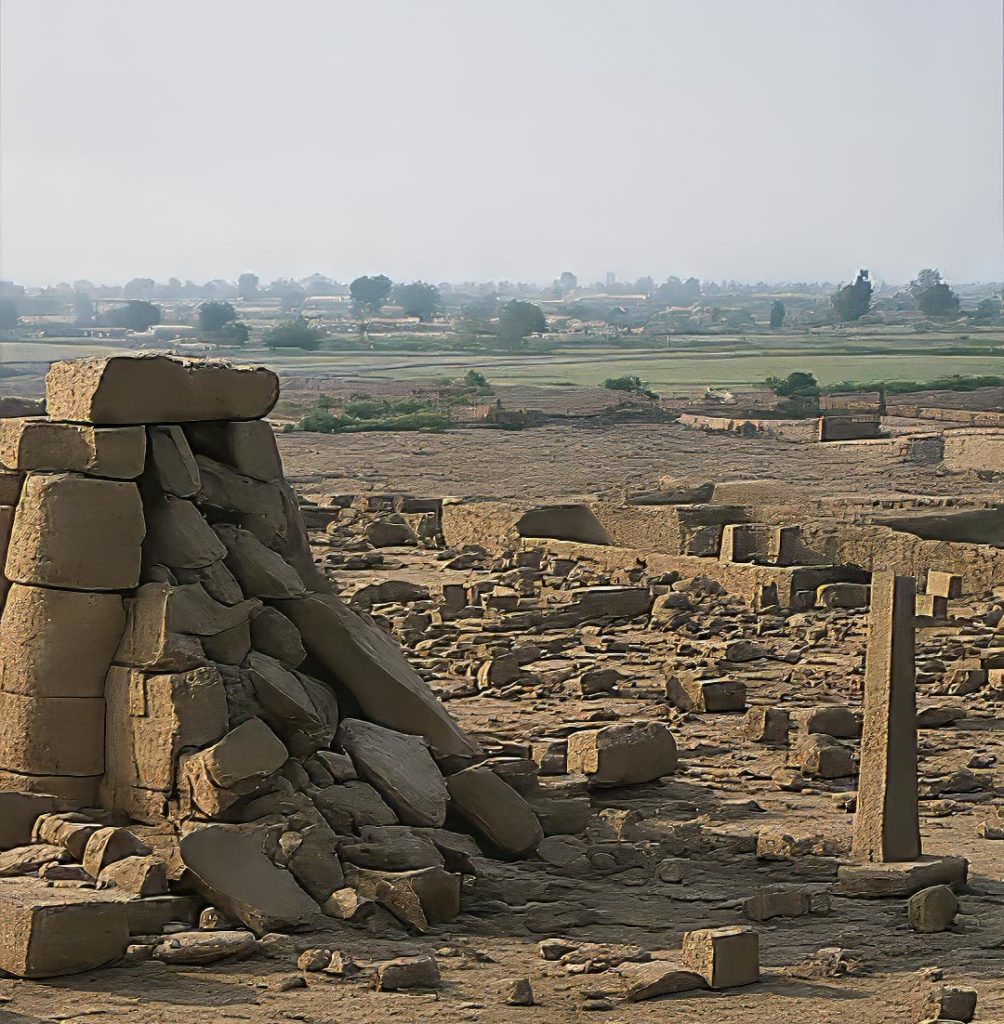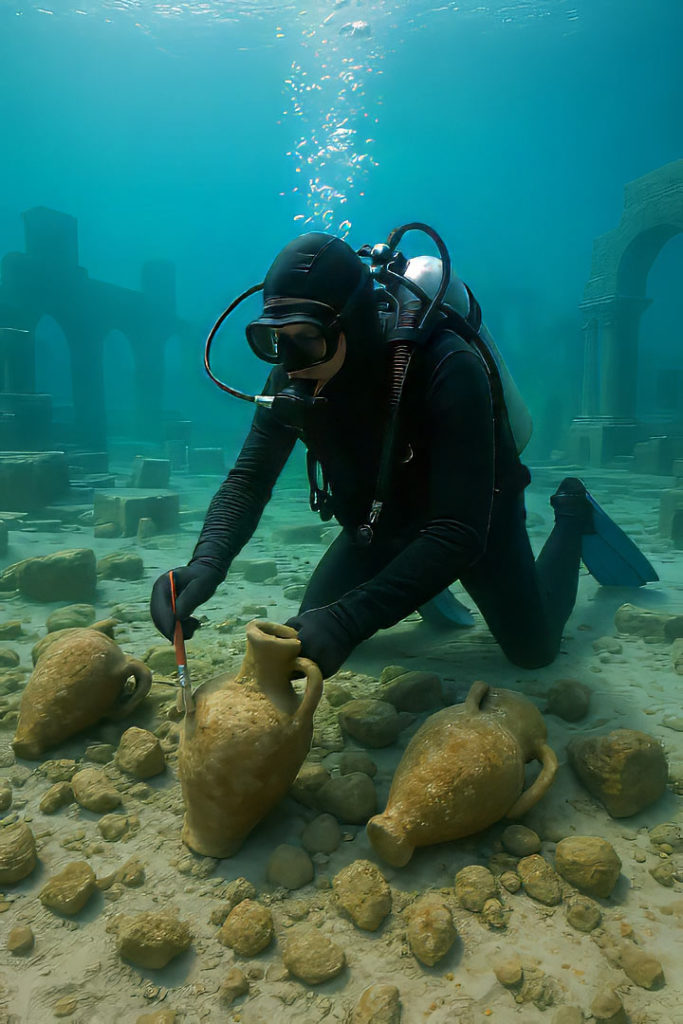2025 was a high‑yield year for Bulgarian archaeology: a lavish late‑Hellenistic Thracian warrior burial reached the public, a probable Triballi royal palace surfaced in Vratsa, rescue digs at Heraclea Sintica produced an untouched grave and a restored marble statue, Black Sea teams mapped a multi‑period harbour near Cape Killick (Erite), a medieval Old Bulgarian inscription came to light at Nikopol Fortress, and excavations on Cape Kaliakra yielded 5th–6th c. Byzantine gold coins. Policy‑wise, the Bulgarian government injected BGN 1.8 million into seven strategic sites, and authorities moved to ring‑fence heritage at Sofia’s Roman amphitheatre. Together, these finds confirm long‑suspected nodes in Thracian power and extend the coastal timeline of port activity back to the early 1st millennium BCE.
Sakar Mountains: a Hellenistic elite warrior in gold (Topolovgrad, Kapitan Petko Voivoda)
A rescue excavation of Mound 1 at the Tumbata necropolis (fieldwork in 2024; conservation and first full public display in 2025) revealed the cremation burial of a late‑Hellenistic Thracian aristocrat, with his horse cremated alongside. Grave goods include a gilded silver wreath, gold jewelry, weaponry, a gem‑inlaid iron knife, and elaborate horse harness fittings (including a large golden frontlet with a snake). The ensemble underscores elite mounted identities and Hellenistic connectivity across Sakar. The National Archaeological Institute with Museum (NAIM‑BAS) showcased the assemblage in “The Glitter of the Hellenistic Gold. The Sovereigns of Sakar” (Aug 13–Oct 17, 2025). More information here: Naim.bg
Media analyses framed the deceased as the “Lord (or Ruler) of Sakar,” situating the burial c. 150–100 BCE and highlighting prestige horse gear with Heracles imagery—material signals of martial ideology and supra‑regional exchange. More to find here: Live Science
What this changes: The assemblage confirms that Sakar hosted a high-status Hellenistic power center and documents cremation-plus-deposition rites with conspicuous equestrian wealth, expanding the geographic spread of such practices beyond the better-known Odrysian loci.
Vratsa city center: a probable Triballi royal palace
Urban rescue work on a new building plot in Vratsa revealed precision dry-stone krepis walls associated with rich tombs, known since the 1960s. The lead excavator argues that the complex represents a royal palace of the Triballi, later converted into a heroon (mausoleum) for a deceased ruler; if upheld, it fills a decades-long gap in the archaeology of northwestern Thracian polities. More information here: Arkeonews
What this discovery changes: The find supports long-standing hypotheses of a Thracian dynastic center in the Vratsa area and re-contextualizes the famous Mogilanska Mound elite burials as part of a single royal complex—pending stratigraphic expansion and peer-reviewed publication.
Heraclea Sintica (Rupite–Petrich): rescue digs and a marble statue back on its feet
Pipeline-driven rescue excavations at the western necropolis yielded an untouched grave cut into bedrock, containing seven vessels (five bowls, a jug, and a lamp), dated broadly to the 2nd–1st century. BCE. The same campaign recovered a figurine of Epona—a Celtic horse goddess—signaling cultural mixing on the Middle Struma in the late Hellenistic/early Roman period, according to news from BTA.
Meanwhile, a life‑size marble statue found in 2024 in the site’s Great Canal was fully restored and unveiled upright at the National Archaeological Museum (Sofia) on Aug 5, 2025, at an event where the PM explicitly linked extensive infrastructure (e.g., the Vertical Gas Corridor) with new archaeological opportunities.
What this changes: The intact grave tightens mortuary practice data for the city’s outskirts; Epona points to religious syncretism; and ongoing finds plus surging visitation validate the policy coupling of development with salvage archaeology.
Black Sea archaeology: mapping a long‑lived harbour at Cape Killick (Erite)
From Sept 17–23, 2025, a National History Museum underwater campaign near Cape Killick/Killik (by Bliznatsi) registered >300 finds—amphorae, anchors (including Roman type B and a medieval “type E”), and a sunken ship—indicating harbour functions from the early 1st millennium BCE through the 7th c. CE serving the fortress of Erite (noted on the Tabula Peutingeriana). This confirms the 2023 survey hints and bounds a working port landscape, not just an ad-hoc refuge.
Complementing this, an underwater survey in Taukliman (Bird Bay), northeast of Kaliakra, documented multi‑period submerged cultural layers and a 19th-century western shipwreck, expanding the maritime dossier for the Northern coast. Read more at: The Sofia Globe.
What this changes: The temporal range and anchor typology validate hypotheses of a continuous coastal logistics node at Erite and nudge the Western Pontic shipping map earlier than formerly demonstrated.
Nikopol Fortress (Pleven): Old Bulgarian inscription and phasing
Late in the 2025 season, excavators discovered a late 13th–to early 14th-century Old Bulgarian inscription carved on a tower block. The project’s running synthesis distinguishes three separate fortification phases (late 13th century, late 14th–early 15th century, early 16th century). Conservation is underway, with the hope of reading and displaying the inscription by year’s end—more from BTA.
What this changes: The epigraphic piece should refine construction sequences and potentially identify the builder/overseer behind the earliest curtain—crucial for anchoring the fortress’s role amid Second Bulgarian Tsardom–Ottoman frontier dynamics.
Cape Kaliakra (Kavarna): Late Antique coinage and a deep dataset
The 2025 “Kaliakra” campaign reported 5th–6th c. Byzantine gold coins and a harvest of >2,800 artefacts to date, with work targeting the necropolis opposite the “Rich Quarter” and the elusive fifth church serving it. Together with ongoing coastal surveys, Kaliakra is consolidating one of the richest, best‑stratified Late Antique–medieval packages on Bulgaria’s North coast. Read more: BTA.
Fieldwork infrastructure, policy, and training
- Strategic funding: On July 2, 2025, the cabinet allocated BGN 1.8 million for excavation and field conservation across seven priority sites: Pliska, Apollonia Pontica (Sozopol), Sts. Cyricus & Julitta Island, Kaliakra, Trapezitsa, Nicopolis ad Istrum, the Thracian settlement at Vasil Levski (Karlovo), and Petrich Kale (Avren). Expect these to anchor 2025–26 campaigns and on‑site presentation.
- Heritage safeguarding: Amid rumors about construction near the Amphitheatre of Serdica, the Culture Ministry publicly denied any plans to build over the Roman monument—signaling stricter urban-archaeology guardrails.
- Training excavations: The 2025 seasons were conducted at Apollonia/Messarite (the settlement periphery of Apollonia Pontica) and Tell Yunatsite (5th-millennium BCE stratigraphy), maintaining a strong field-school pipeline and expanding datasets beyond headline rescue sites.





